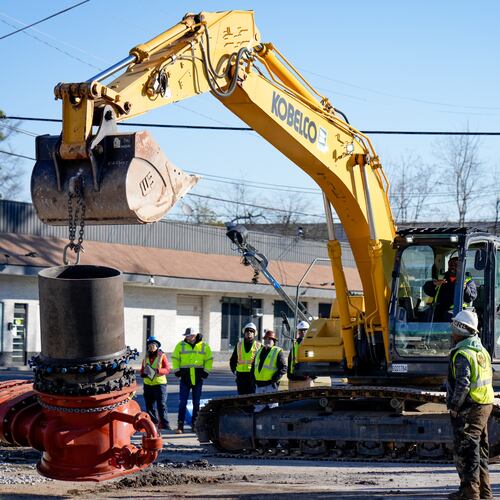Bright orange and standing more than 10 feet tall, the signs are hard to miss as you approach Roswell Road from either direction on Marietta Parkway in east Cobb County.
They declare the $7.5 million in improvements planned for that area are coming from federal stimulus funds.
So are the signs for that matter. The cost to taxpayers: $1,500 each plus $100 for installation.
As more such federally funded road projects get under way, hundreds more of these signs are expected to pop up across the state. All thanks to a Georgia Department of Transportation requirement of two signs per stimulus project. At an average cost of about $1,200 per sign and with about 250 projects planned or under way, the cost to taxpayers could top $600,000, though state contractors could cut that amount by reusing some signs.
The signs are similar to ones local governments in Georgia use to highlight projects funded with special sales taxes. Still, at least one critic says the stimulus signs are a waste of money.
“This is money which is being spent for public relations purposes for the Obama administration,” said Lance Lamberton, an Austell resident and president of the Cobb County Taxpayers Association. “Considering how much in debt the stimulus plan is going to put future generations into ... to spend that kind of money is basically an abuse.”
The federal government doesn’t require the signs but “strongly encourages” them, while suggesting how big they should be and what they should say. Proponents say they let people know how their taxpayer dollars are being spent. The signs, for example, are labeled with recovery.gov, the Web site where taxpayers can learn how to report waste, fraud and abuse.
“To be able to show the public specifically what their stimulus dollars are paying for in terms of transportation improvements, Georgia DOT decided to place the signs,” GDOT spokesman David Spear said.
Other states are handling things differently. Virginia, for example, has opted not to require the signs, citing scarce funds in the wake of more than $4.6 billion in transportation funding cuts.
“We decided to invest all of our available stimulus funding into our projects and felt that we should not be spending additional money on signs that were not absolutely vital to the work zone,” said Jeff Caldwell, a spokesman for the Virginia Department of Transportation.
Florida has also decided not to require the signs.
North Carolina officials, however, are allowing up to 48 signs across the state, at a cost to federal taxpayers of about $2,500 each.
The signs were the focus of debate in the U.S. Senate last week, when Sen. Judd Gregg (R-N.H.) unsuccessfully attempted to ban spending stimulus money on them, calling them “self-congratulatory” and an “inexcusable waste of money.”
Designed to help pull the nation out of a crippling recession, the $787 billion American Recovery and Reinvestment Act requires states to report how many jobs the federal spending sustains or creates. Spear, the GDOT spokesman, said he doesn’t know how many jobs the signs are generating.
However, the spending on the signs has helped preserve some jobs at Marietta-based C.W. Matthews Contracting Co., which is handling some of the stimulus projects in Georgia and is making its own signs, an executive with the company said.
Meanwhile, C.W. Matthews intends to start construction within a month to make it easier for westbound Roswell Road traffic to access Marietta Parkway. The work also involves rebuilding the parkway’s flyover, near where the stimulus signs have already attracted at least one strong reaction. Someone slapped a red bumper sticker on each that declares: “More Government Equals Less Freedom ... Period.”
About the Author
The Latest
Featured


